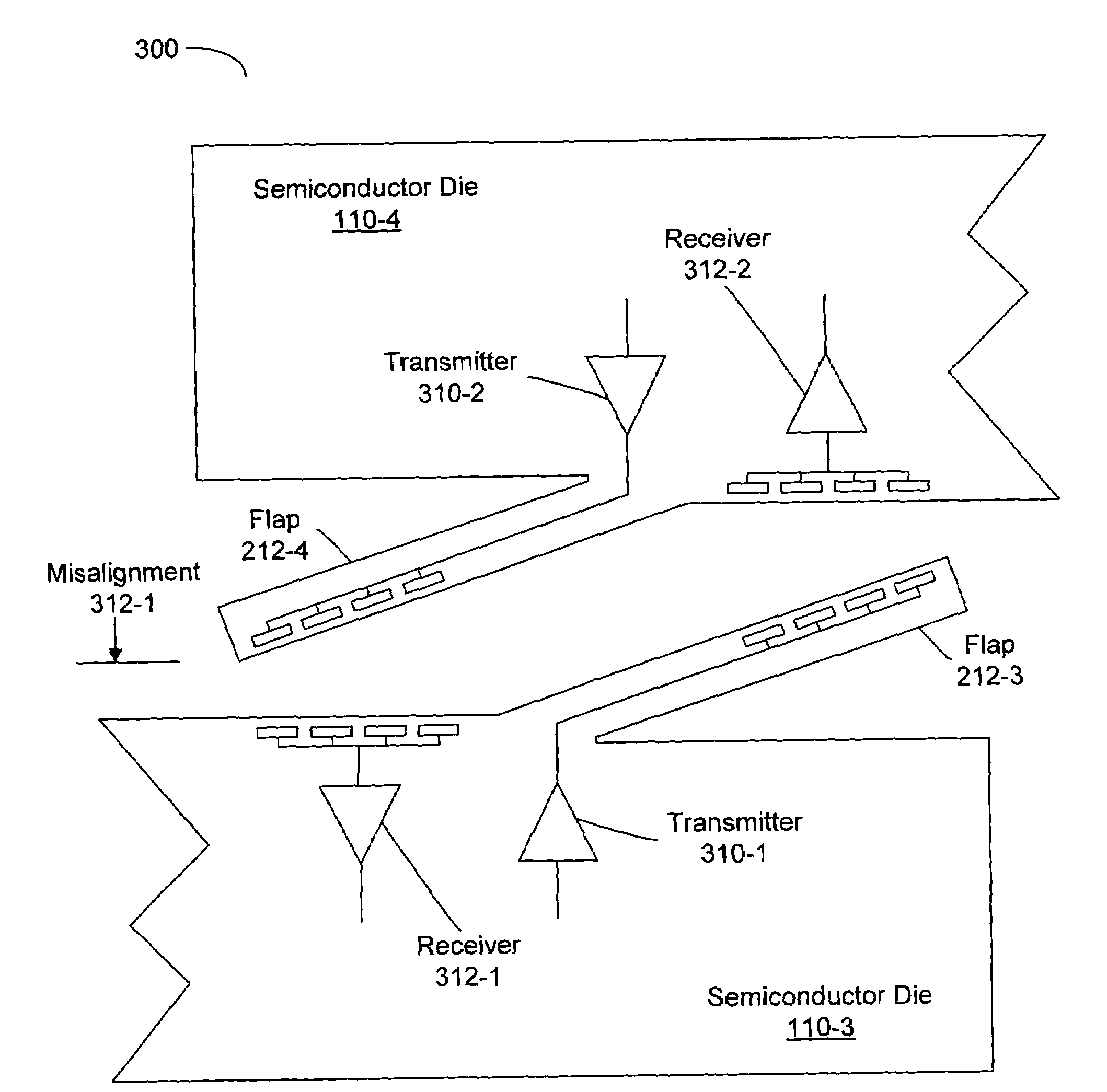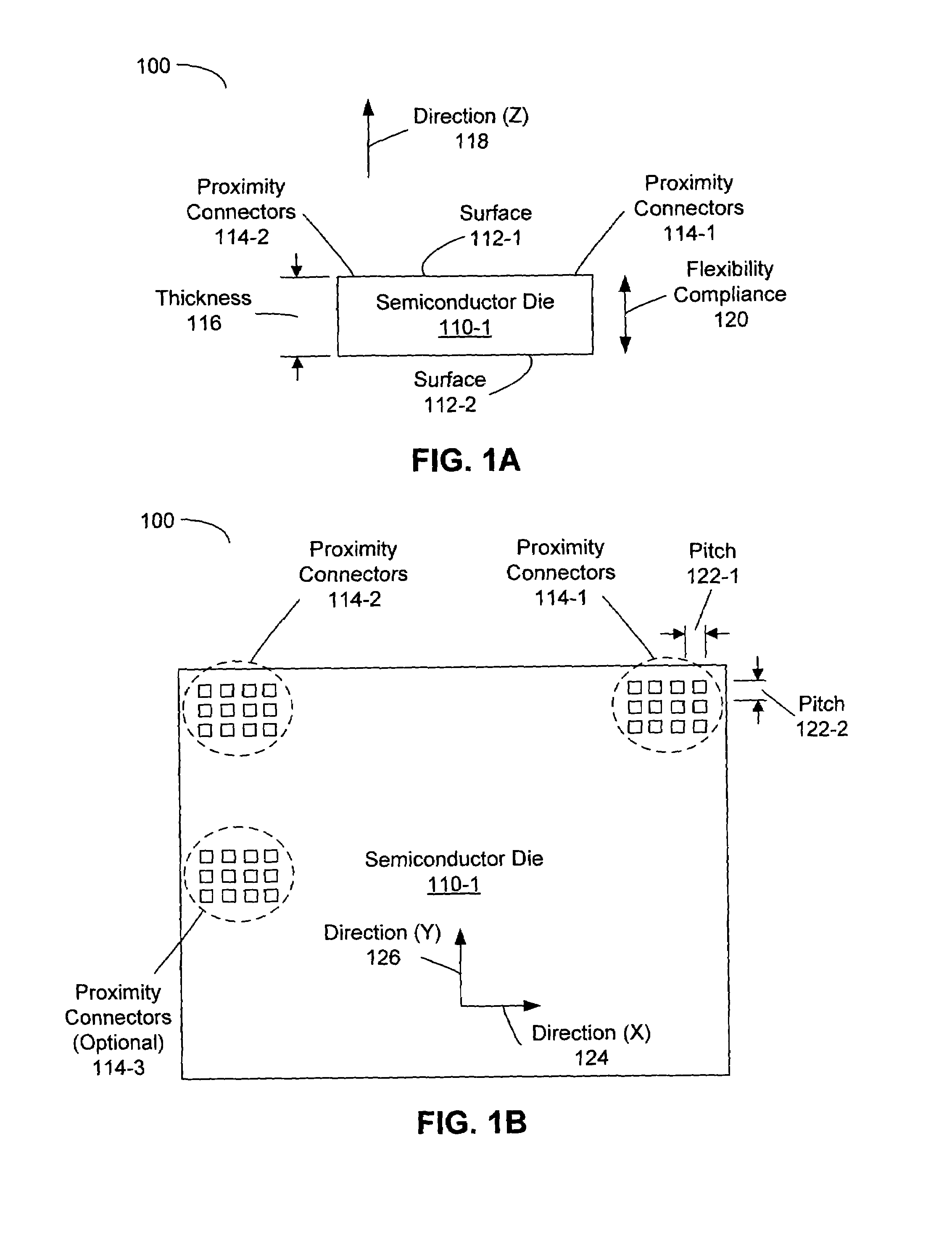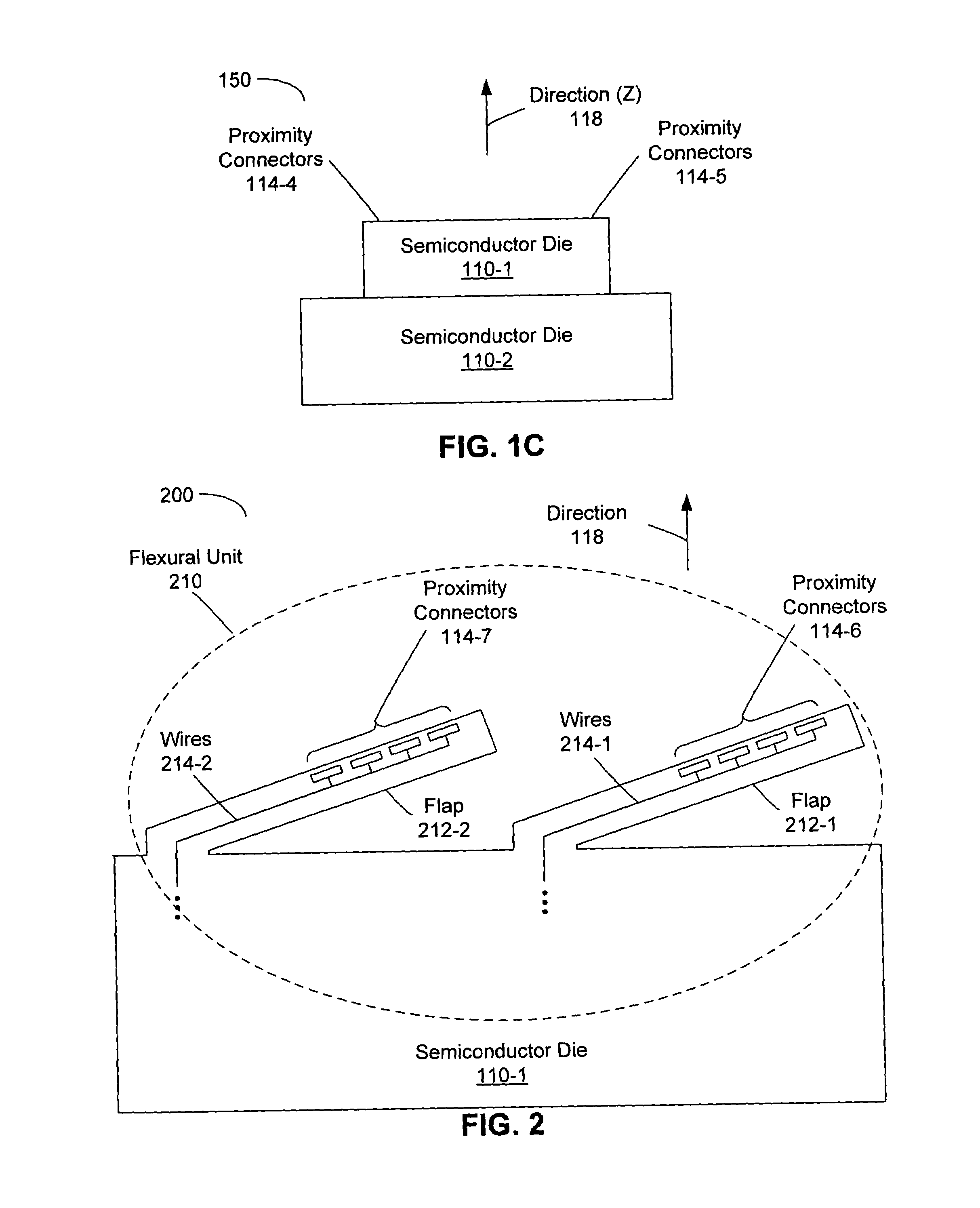Structures for Z-aligned proximity communication
a technology of proximity communication and structure, applied in the direction of semiconductor devices, semiconductor/solid-state device details, electrical apparatus, etc., can solve the problems of destroying received signals, affecting the smooth operation of the chip, and the inability to properly align the chips using existing mounting structures, etc., to achieve greater flexibility compliance, reduce misalignment, and reduce misalignment
- Summary
- Abstract
- Description
- Claims
- Application Information
AI Technical Summary
Benefits of technology
Problems solved by technology
Method used
Image
Examples
embodiment 200
[0065]FIG. 2 is a block diagram illustrating a side view of an embodiment 200 of the semiconductor die 110-1 having a flexural unit 210. The flexural unit 210 may include one or more flaps 212. The flaps 212 are intentionally non-adherent to a portion of a surface of the semiconductor die 110-1. This may be accomplished using micro electro-mechanical system (MEMS) techniques that are known in the art to remove material beneath the flaps 212 (for example, using a sacrificial layer). The flaps 212, including wires 214 and proximity connectors 114 (each including one or more pads or connectors), have a flexibility compliance greater than the pre-determined value in the third direction (Z) 118. This flexibility allows the flaps 212 to displace approximately along the third direction (Z) 118 and relative to a centroid of the semiconductor die 110-1.
[0066]The flaps 212 may have a variety of cross-sectional shapes including rectangular and square. When viewed from above (such as the top vi...
embodiment 700
[0081]This approach is illustrated in FIG. 7, which is a block diagram showing a side view of an embodiment 700 of a semiconductor die 110-11 having at least one electromechanical transducer 710. The electromechanical transducer 710 provides a mating force. The electro-mechanical transducer 710 is closely coupled to a structure having a flexibility compliance, such as flap 212-8. An optional control circuit 712 may be included as part of a feedback loop based on a misalignment sensor (not shown).
[0082]The optional control circuit 712 may compare a measured misalignment, such as the misalignment 312-3 (FIG. 4), with a desired misalignment (i.e., a desired gap) between adjacent semiconductor dies. The optional control circuit 712 in the feedback loop may reduced and / or eliminate the misalignment even when there are considerable perturbations due to fabrication, assembly, operation and / or external causes, by providing control signals to the electromechanical transducer 710.
[0083]In som...
PUM
 Login to View More
Login to View More Abstract
Description
Claims
Application Information
 Login to View More
Login to View More - R&D
- Intellectual Property
- Life Sciences
- Materials
- Tech Scout
- Unparalleled Data Quality
- Higher Quality Content
- 60% Fewer Hallucinations
Browse by: Latest US Patents, China's latest patents, Technical Efficacy Thesaurus, Application Domain, Technology Topic, Popular Technical Reports.
© 2025 PatSnap. All rights reserved.Legal|Privacy policy|Modern Slavery Act Transparency Statement|Sitemap|About US| Contact US: help@patsnap.com



